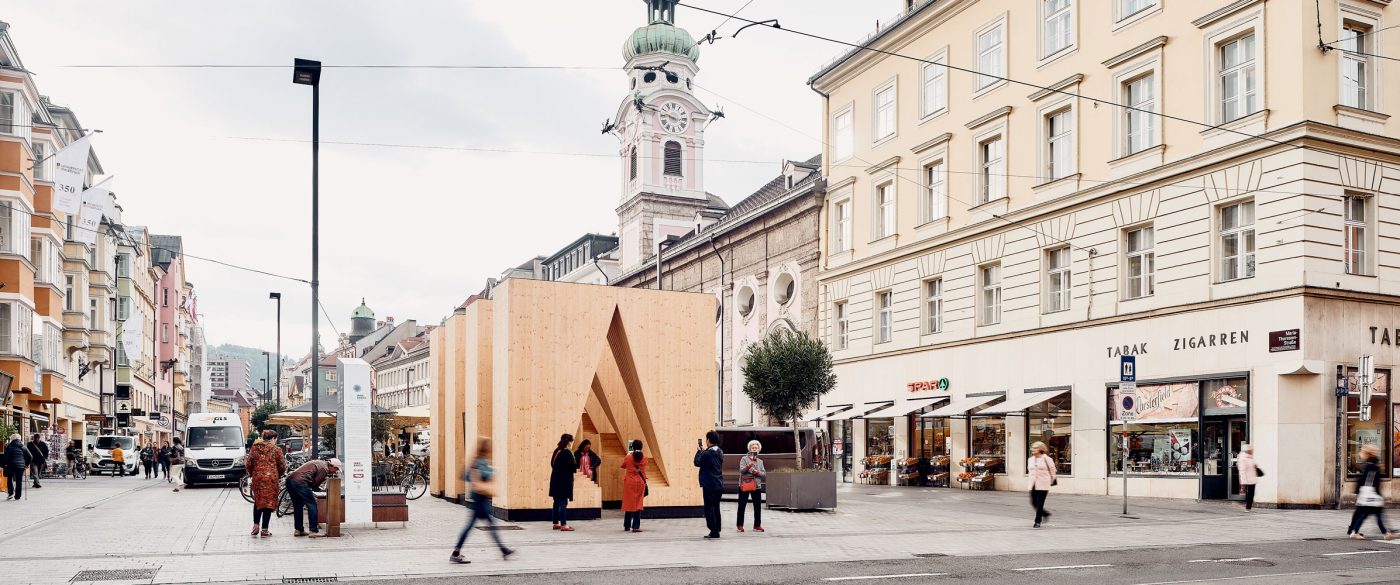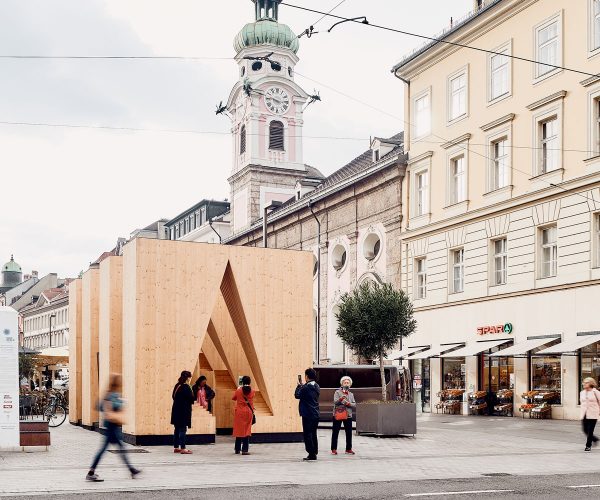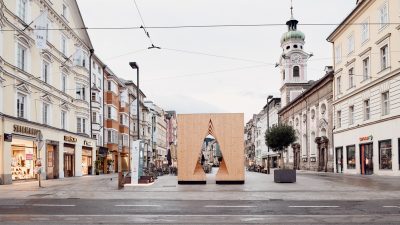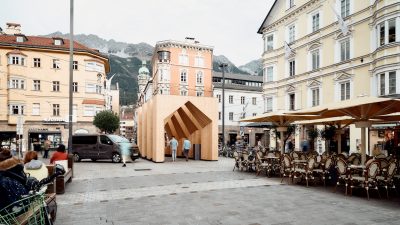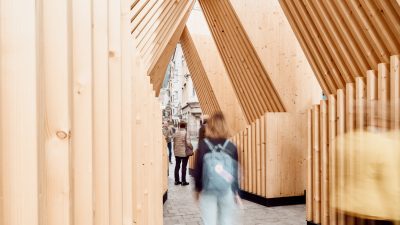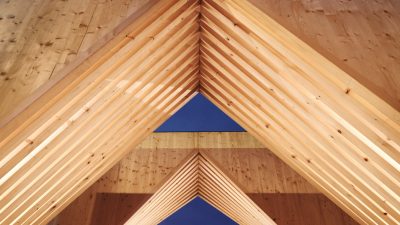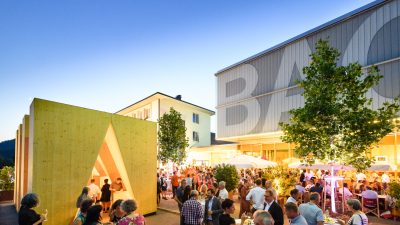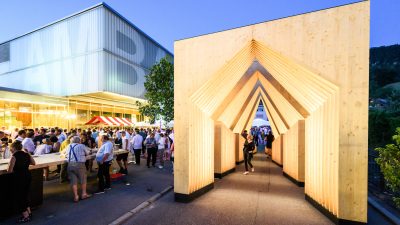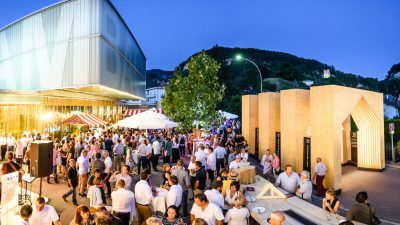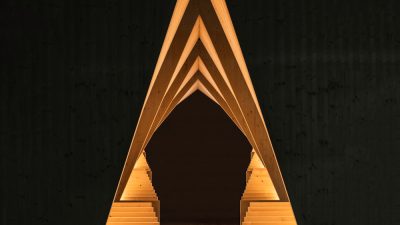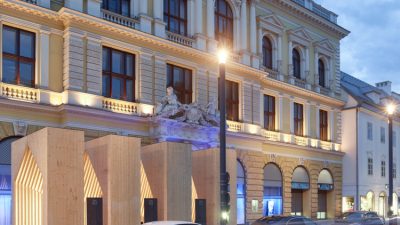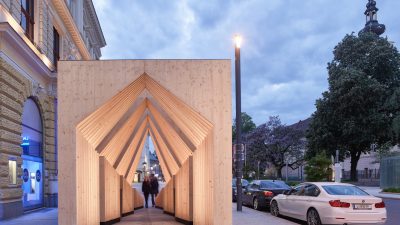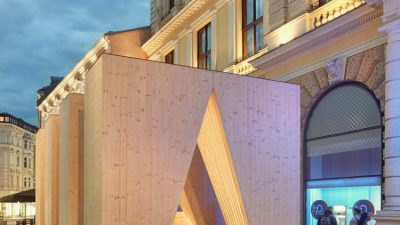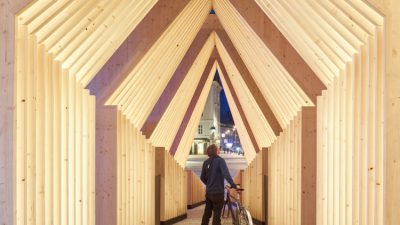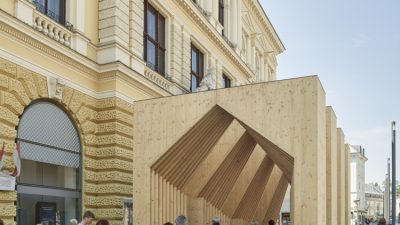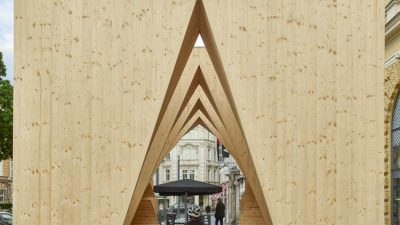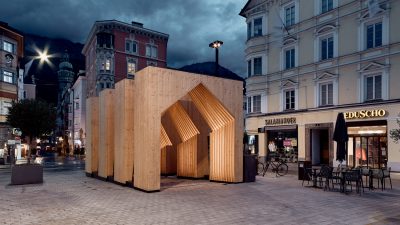Project Information
proHolz Austria, proHolz Bayern, Lignum Schweiz, www.woodpassage.eu
Atelier Andrea Gassner, Feldkirch
TU München Hermann Kaufmann, Maren Kohaus
Fetz Holzbau, Egg
Completition
2019
Rights
Photo Christian Hartlmaier, Alex Schmidt, Kurt Hoerbst, Matthias Rhomberg, Darko Todorovic
Text Atelier Andrea Gassner
woodpassage
A tree grows in the forest – wood comes from the tree – and the wood becomes a house. The wooden “woodpassage” sculpture placed outdoors in the centre of Europe exemplifies this process. With simple pictographic symbols over forty stages, it conveys the transformation from fir to house. This conversion is shown as cuts out of large blocks of wood, cut by cut.
The result is a sensory experience; consisting of four wooden gates, 4.32 m wide, 4.32 m high and 8.65 m long, the “woodpassage” expresses a strong three-dimensional message when viewed from afar. Whilst strolling through the cheerfully illuminated passage, it becomes playful ambassador for the ecological advantages of timber construction.
About 13 cubic meters of wood were needed for the construction of these 4 gates. This amount grows back in Europe’s forests in 1/2 a second. Furthermore about 13 tons of CO2 are permanently bound in the wood of these 4 gates. This corresponds to the pollutant emissions of a passenger car over 8 years.
The increased use of wood in construction is creating a “second forest” in our towns and villages. Wooden houses bind CO2 in the long term, which relieves our environment and contributes to improving the climate.
Every trunk used from the forest creates space for new trees. While wooden buildings store carbon over their entire lifespan, the amount of wood used in the forest grows again and actively extracts CO2 from the surrounding air. Wood as a building material thus has a doubly positive effect on the CO2 balance.
